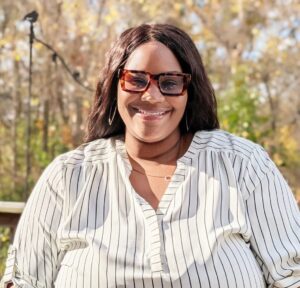How to communicate better with neurodiverse colleagues
Our neurodiverse colleagues bring so much to the table.

Aaron Traub is an account executive at CURA Strategies.
When I was five years old, my teachers and family noticed that I was behaving “differently” from everyone else in my age group, particularly noting how I was not playing on the playground with other kids, had trouble following directions and would fixate on things that were not presently happening. Trying to piece together why I was displaying these behaviors, my mom took me to a psychologist, where I was diagnosed with autism spectrum disorder, a developmental disability caused by differences in the brain that affect how individuals interact with others, communicate, learn and behave.
Generally, individuals with autism have trouble communicating effectively both verbally and nonverbally, have difficulties understanding social cues and are highly sensitive to changes in their environment, according to the Diagnostic and Statistical Manual of Mental Disorders (DSM-5).
While I was diagnosed at the age of 6, it wasn’t until middle school that my mom told me I was autistic. I was initially hesitant to share my diagnosis with others but quickly realized it was important to raise awareness about autism and reduce stigmas around it. Over time, my perception about autism shifted, and eventually I came to view it as a strength.
By the time I started college, my teachers encouraged me to pursue a bachelor’s degree in communications, noting how my ability to speak up about my diagnosis and communicate effectively with others will benefit me in both my personal and professional life when I graduate. I was interested in the techniques people in the PR field use to enhance a client’s voice, and I thought that these skills would give me the confidence to challenge myself and use my own voice to make a difference for those with autism.
I’ve worked in PR for two years now. Again, I thought I could hide my diagnosis and be in an environment where I would be treated as an equal by my employers, but hiding my diagnosis only made it harder for me to succeed. I was afraid disclosing my diagnosis would mean they would see me differently and think I wouldn’t be able to handle working in a field that requires skills that are typically challenging to individuals with autism. Nevertheless, my managers and colleagues were happy I told them about my diagnosis and wanted to learn more about how they could accommodate me, noting that they don’t commonly see neurodivergent individuals speak up about their diagnoses.
To help spread awareness about autism in the workplace, I’ve written blogs and led presentations that guide employers on strategies they can adopt to support individuals with autism. My goal has always been to educate others about neurodiversity, reduce any misconceptions around autism and share insights about living with autism.
Given that 1 in 36 children are diagnosed with autism, a jump from the 1 in 44 estimate found in 2018, it’s important that employers not only understand how to effectively communicate with neurodivergent individuals but learn how the unique traits of those with autism can become an asset to the organization. For PR employers, these are my must-have “communication considerations” when working with individuals with autism:
- We embrace structure: Structure is key to how individuals with autism thrive. Since the PR industry is full of unexpected curveballs and last-minute asks, this can be overwhelming sometimes. Therefore, it’s important for employers to help prepare people with autism for what they can expect and provide as much detail as possible when assigning projects.
- Be extra communicative: Individuals may not understand or interpret social cues correctly, especially in today’s world of remote and hybrid workplaces. That’s why it’s important to communicate clearly and make sure they understand any instructions and feedback.
- Provide written action plans: Individuals with autism may not always understand how to react or behave in certain settings, and this ties in with the challenges in understanding social cues. PR is a fast-paced industry with lots of moving parts, and individuals with autism may be afraid to speak up, especially if they are in the first few years of their career. Always have a plan of action outlined for them and communicate with them to make sure they are aligned on next steps.
- Patience: Some individuals with autism exhibit repetitive behavior or ask for instructions to be repeated. It’s important to be patient and set them up for success from the beginning.
I believe that learning how to effectively communicate with neurodivergent individuals can help improve how you communicate with the public at large. Patience, understanding, clarity and structure are not requirements exclusive to those with autism, and these qualities can help PR companies be more successful at partnering with clients to deliver results.
I’ve learned to accept my differences, and I know that it’s better to educate others about my struggles as an autistic individual than keep it hidden. But it’s important that companies create an environment where employees have a safe space to share this type of personal information. I’m thankful I work in a place that has created this safe environment. Though there is progress being made in embracing neurodiversity in the workplace, I hope my story can encourage neurodivergent individuals to accept their differences, join the PR community and speak up about it with their colleagues.






